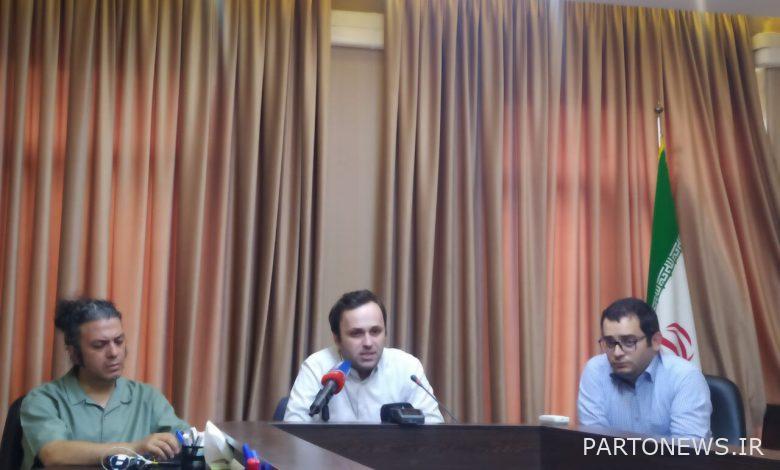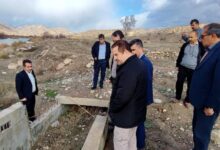“Latarino” challenged the startups/ the wide wave of migration of managers – Mehr News Agency | Iran and world’s news

According to Mehr reporter, the launch and review meeting of the documentary “Latarino” was held today, Sunday, May 10th, with the presence of the director Majid Rostgar and Ehsan Teklo, the research consultant of the documentary.
Mehdi Dezfuli, the host of this meeting, explained at the beginning: This is the newest production of the Film Ambassador Documentary Center, which was made in the field of startups in cooperation with the Sore Cinema Organization in the field of art. The documentary is 73 minutes long and tries to review the country’s startups.
Speaking about the documentary, director Majid Rostgar said: This documentary is the result of two years of research work, we tried to make it ripe in terms of content and leave the necessary impact on the audience. After two years, when the researches were completed, we had 52 pages of the screenplay with mise-en-scène, along with space creation and even decoupage. We were able to complete the work within three to four months.
He continued: In this work, we benefited from various experts, Mr. Teklo is one of them who helped us a lot and we tried to convey our message accurately to the audience. We had many challenges in the field of directing and scriptwriting. The initial challenge was that we had little familiarity with this field, and the experts and the producer helped me understand the work and provide what is needed. My other challenge was that we had to simplify a set of heavy and complex content so that the general audience could benefit from it.
Referring to other challenges, this director mentioned: It was also necessary to reach an up-to-date, attractive and understandable form. Financial issues are one of the things that have always been there, and the work that we may have to collect in 12 days was finished in a week, which we did intensively.
Rastgar mentioned about the production of the documentary: The next issue was editing, which took a month and a half. In total, this process was completed within four months of pre-production, production and post-production.
Analysis and pathology of startups since the beginning of the nineties
Then Ehsan Teklo explained: The discussion of startups in the nineties was one of the events that involved many people, but the consequences of what it was and the atmosphere it had were not seen in the media. Since the end of the eighties, we have been observing the development of digital companies and the digital economy in the country. With the presence of Mr. Sattari in the vice chancellor of science and technology, this incident became one of the main ideas of the government, and the presidency became the crown of this field.
He added: At this time, a new type of business such as startups and the ecosystem of startups began to grow in the country. The academic movement also joined this circle very seriously and we witnessed a big event in the nineties. An incident that maybe could not find itself in the economic field, but had its effects in the field of human resources and other fields. It has many weak points that the documentary tried to talk about this phenomenon from the economic point of view and the orientation of the workforce. Also, serious questions have been raised about the continuation of this flow in our lives today.
Teklo pointed out one consideration: these activities have become taboos that no one can question. This is a content documentary where the audience can be told which side to look at. I think there are good words in this work, it can be attractive.
In response, he explained how much they went to private companies in startups: private investment in startups has not been low, but behind many private startups there has been a large amount of government resources, and by the way, this amount is very large and at the same time It has yielded very little. The place where criticism can be placed is the government sector, because it is in charge of policy making. When we criticize the startup ecosystem, it is more cultural, and the cultural dimension is more criticized than the economic one, and there the governance sector is questioned more. In this sense, it is a part of our criticism about culture building.
Our view was not just governmental, it was sovereign
In response to how much they have had a supra-governmental perspective and tried to avoid political orientations, Teklo said: The issue of developing the startup ecosystem is beyond the government, radio and television, cultural institutions, institutions such as the executive headquarters of Farman Imam and… which are sovereign even in this documentary. but among these, the role of the vice president of science and technology of the governments and Mr. Sattari was much more prominent, which has been discussed more. In any case, the role of the vice president of science and technology cannot be hidden, and in this regard, it is highlighted in the documentary, both President Hassan Rouhani and Che Satari used these policies as an achievement for their own activities. I remember a speech that was on a TV program and Mr. Rouhani He mentioned the innovation ecosystem plan as his main achievement. Our effort was to speak from a scientific point of view and we hope that the documented words will not get mixed up in political conflicts.
Rastegar further said: fundamental changes and transformations in the knowledge-based field mainly take place during the period of Mr. Rouhani, and small and big events occur during eight years. The time of entry of the discussion of the scientific vice-chancellor into this stream of changes begins. Also, one point should be mentioned that in this field, the discussion of Emiradahi is very high during a period and it was formed during that period. These are from the same period and you should recount it. It is not a story of political categories, but an analysis that should exist in relation to that era.
Teklo also added: The formation of the Innovation Fund took place during the Ahmadinejad period, which is also in the documentary, but its turning point was during Mr. Rouhani’s period.
Migration wave of startup managers
He also said that this decade was the peak of the development of digital companies and foreign and domestic investments. The Scientific Vice-Chancellor of the Elites was very involved in such an environment that both prevents the migration of the elites and includes the reverse migration. But what he was actually laying the groundwork for was a kind of strange money-sprinkling and creating rent and special opportunities for a group of people. These can be read to see who was given these capacities. It should be seen how far the artificial money injection system has worked?
Teklo added: When it comes to the development of startups, the issue of risk is very significant. Surely one of the consequences of this risk was a wave of frustration, which resulted in migrations.
The emergence of the startup visa problem
He clarified: We had a wave of departure of startup managers and we had a completely new genre in this field called the startup visa that you could easily apply for. The National Elite Foundation should be held accountable for this new genre and tell where it stands. We know that those who want to immigrate enter the field of startups.
Referring to one of the challenges in the construction process, Rastegar said: “Our work started with the events of last year, and it was hard to persuade the students to come in front of the camera and talk and have a better pathology of the events.” This was the only place where I wanted these young people to be and use their words. However, their absence did not affect that much.
In the end, this director stated: Most of the policies are the pain relief model and they only look at reducing the pain, otherwise the wound will not become pathological and may cause the loss of an important situation. These policies that we are talking about are more like housing.

